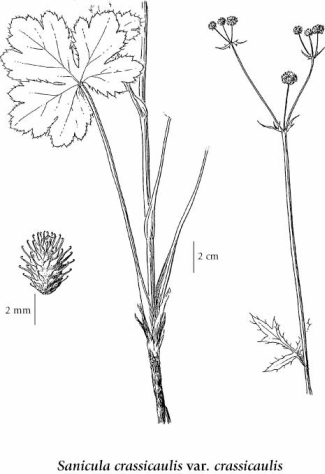E-Flora BC: Electronic Atlas of the Flora of British Columbia
Sanicula crassicaulis Poepp. ex DC.
Pacific sanicle (Pacific blacksnakeroot; Pacific sanicle ) Apiaceae Introduction to Vascular Plants
|
|||||||||||||||||||||||||||||||||||||||||||||||||||||||||||
